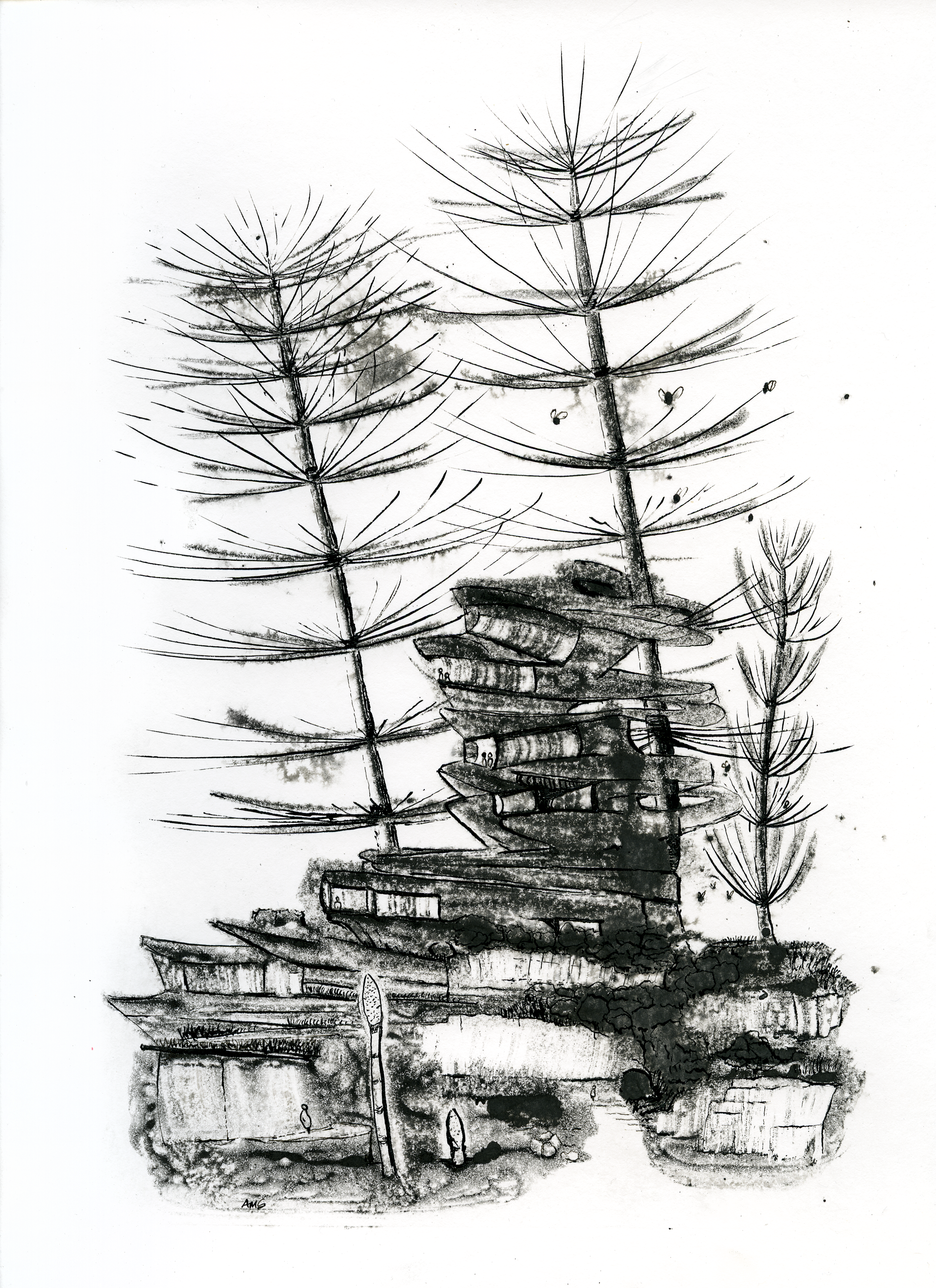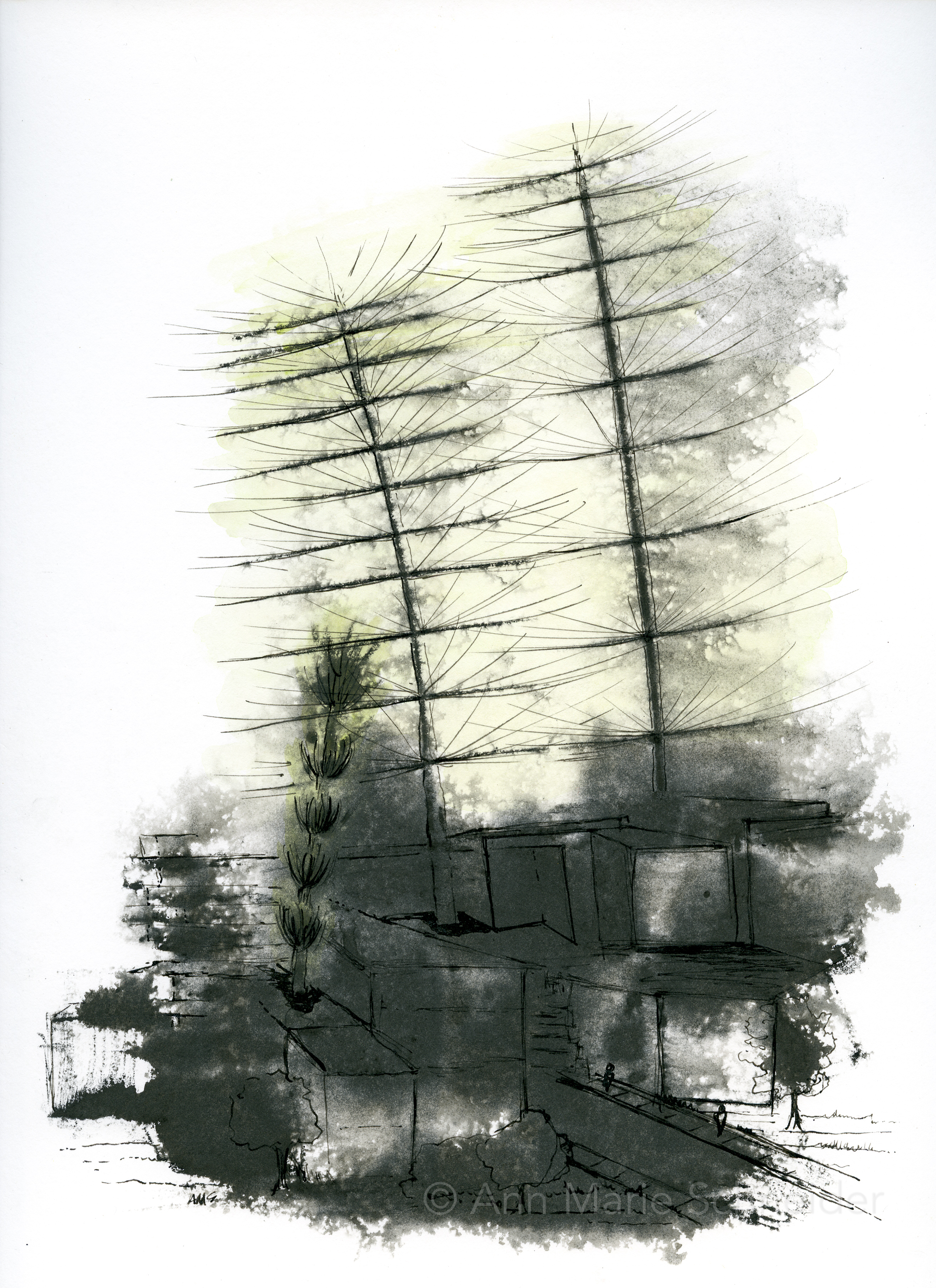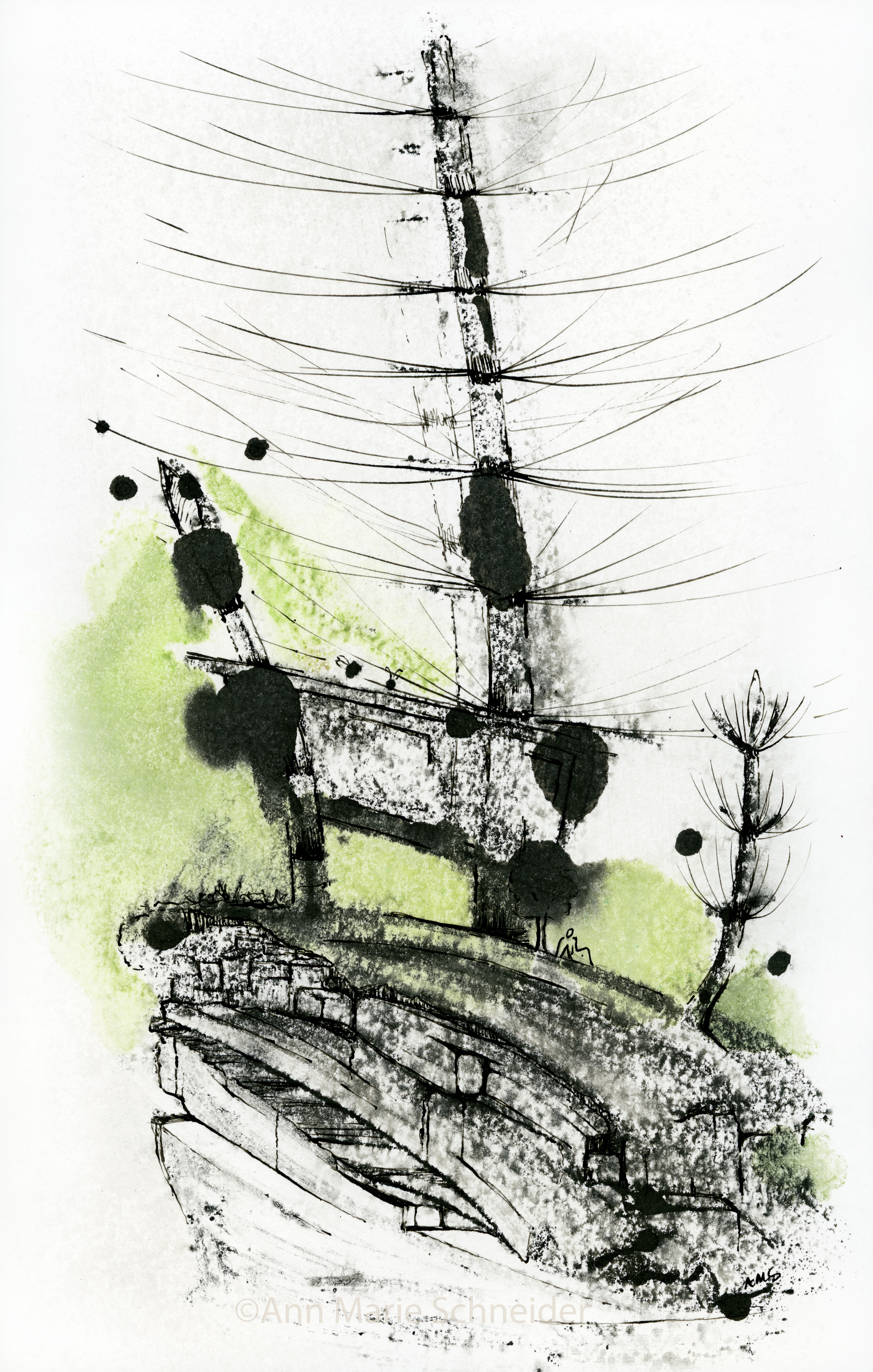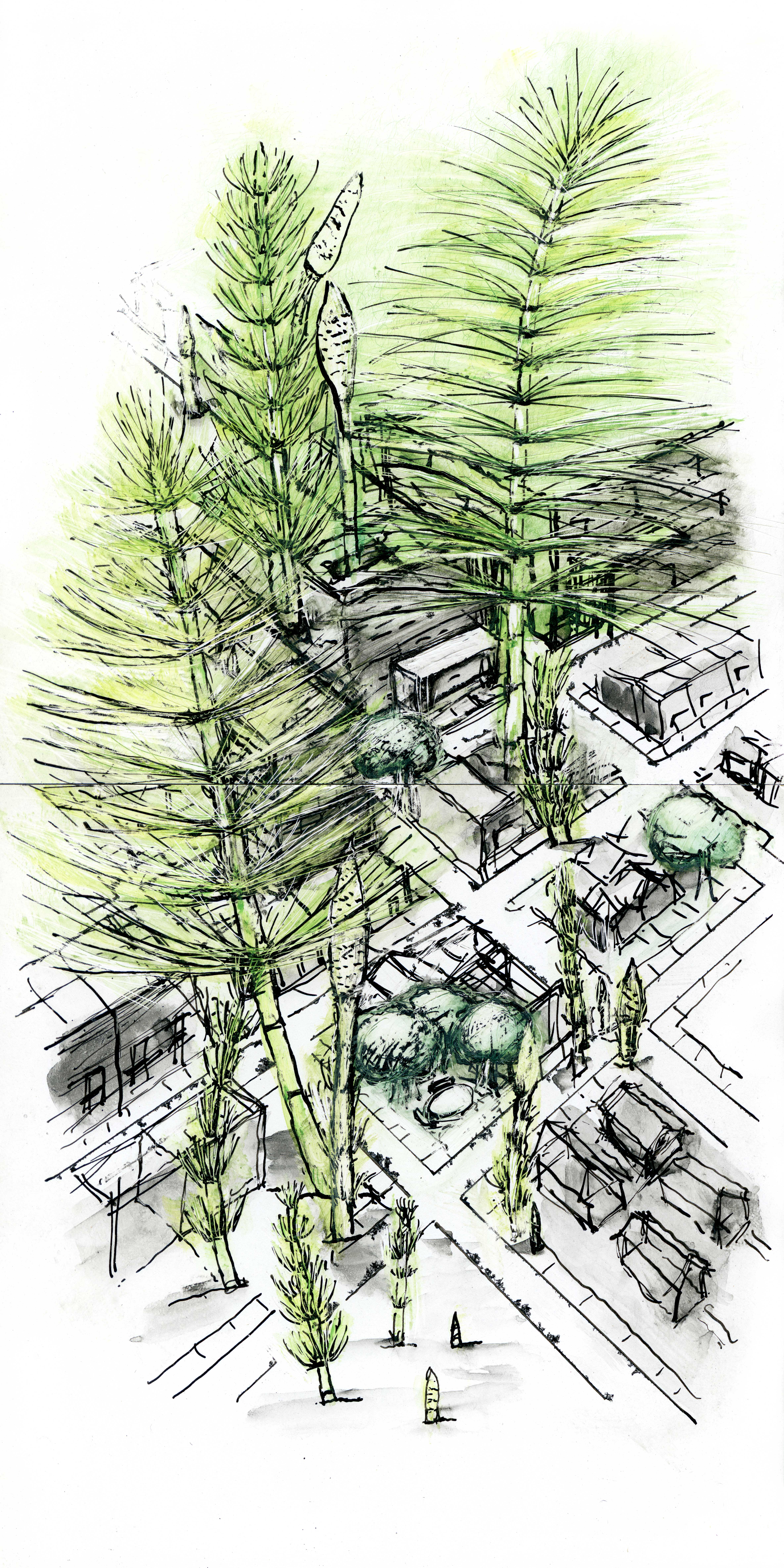EQUISETUM (aka HORSETAIL) RETURNS
A series of monoprints that envision a neobotanical future by resurrecting the megaflora of the paleobotanical past as a disruptor to the built environment - raising questions about how we plant, cultivate, build and restore. Sumi ink monoprints, watercolor, and pen/india ink on watercolor paper.
A series of monoprints that envision a neobotanical future by resurrecting the megaflora of the paleobotanical past as a disruptor to the built environment - raising questions about how we plant, cultivate, build and restore. Sumi ink monoprints, watercolor, and pen/india ink on watercolor paper.













On Equisetum (Horsetail):
This “weedy,” prehistoric, and architecturally intriguing plant has a tall tale to tell. 350 million years ago, horsetails (genus Equisetum) reached heights of 50-100 feet. These ancestors, called calamites, were a key species of the lush swamp forests that became coal deposits through milllennia of decomposition and alchemy. Ironically, these mammoth plants sequestered high levels of carbon from the atmosphere, creating an oxygen rich environment that could support humans. That same carbon is now being returned to the atmosphere by humans through the consumption of fossil fuel. Equisetum still exist today, though much smaller. They are uniquely resilient survivors—thriving in the disturbed, nutrient-poor soils created by human settlement, quietly persisting as living links to our planet's ancient past and unknown futures.
© Ann Marie Schneider, Schneiderwerks LLC, all rights reserved